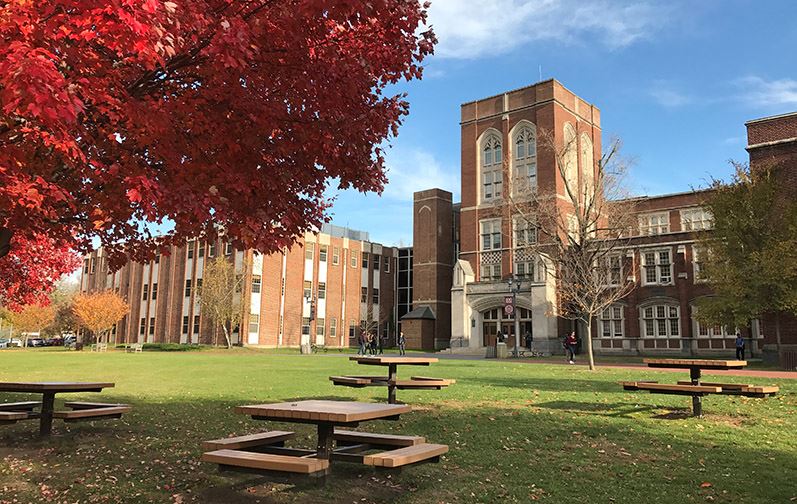Board Considers Use of Reserves to Fund 2025-26 Proposed School Budget
- Category: Schools
- Published: Tuesday, 11 March 2025 17:01
- Joanne Wallenstein
 Reserve funds, electric school buses, special education and a self-insured health plan were all on the minds of the Scarsdale School Board and administration at their third budget study session on March 10, 2025.
Reserve funds, electric school buses, special education and a self-insured health plan were all on the minds of the Scarsdale School Board and administration at their third budget study session on March 10, 2025.
Under consideration is a draft budget of $191,504,833 for the 2025-26 school year. It represents a 3.55% budget to budget difference over the 2024-25 budget which translates to a 3.4% increase in the tax levy or a $415 a year difference for the median assessed homeowner in Scarsdale. Those in the Mamaroneck strip would see a modest decrease. The increase meets the 3.40% tax levy limit or tax cap.
The proposed budget includes:
Four electric school buses and an agreement to build the infrastructure to charge and maintain the buses.
A new synthetic turf practice field at Scarsdale High School and plans to replace elementary school playgrounds.
Two additional full time special education teachers and a teaching assistant to facilitate the expansion of two new special education programs at the middle school and high school.
It also eliminates a half time math teacher, a data services position along with 6 additional positions eliminated due to enrollment or attrition along with $226,000 in teacher aide hours.
At the outset of the meeting, the board appeared to be poised to move forward with the plan.
However, after a discussion about the use of reserves and the volatility of the self-insured health plan it wasn’t clear if further changes might be made.
At issue was the use of $2,290,000 of reserves to balance the budget, with $1,190,900 coming from the unassigned fund balance,$1,000,000 from the health care reserve and $281,233 from the employee retirement reserve.($90,900 will be replenished to fund balance from the bond offering.) A long range financial forecast in November 2024 showed that if reserve funds continued to be used at the current rate, the district would face a negative fund balance by 2027-28.
Furthermore, the contribution to the budget from the health care reserves could expose the district to risk if health care costs continue to rise.

Health Care Plan
 Following the budget discussion the district’s Health Plan consultant showed the history of the plan and his projection for next year.
Following the budget discussion the district’s Health Plan consultant showed the history of the plan and his projection for next year.
His data showed that health care costs for 2024/25 were exceeding projections for this year. The budgeted projected claims were $12.5 mm and the updated projection is $14.3 million. Driving this increase are the following:
-A 26.8% increase in ER visits
-A 19% increase in outpatient surgery
-A 75% increase in claims above $100,000
-A 10.5% increase in the amount paid per visit.
About prescription drugs, the consultant said, “Just 4% of district members utilized specialty medications accounting for 68.9% of the drug spend.”
See the chart below for further details.

Statistical models were used to forecast the districts expense in 2025-26 and the consultant estimated it to be $23,846,157. The proposed budget includes $24,096,143. However, using the experience of the past three years, the costs could be closer to $25 mm so reserves might be needed to pay the bills.
The Board has few choices for reductions as health benefits, pension costs and salaries are fixed. However, the continued expansion of the Special Education program to the middle school and high school requires new hires and could be up for discussion.
The administration estimates that it is more cost efficient to offer these two special classes in district rather than pay outside tuition for students to attend other schools, which is estmated at $84,000 per students plus transportation. For the 2025-26 school year, enrollment is projected at 3 students for the 8:1:2 program and 4 students for the 12:1:1 program. The administration proposes to bring in tuition paying students from other districts to defray expenses.
There was no data presented about parent-student satisfaction with the program. Also with so few students, shifts in plans for next year could impact the financial scenario. An estimated 4-8 additional full time staffers will be needed in the next 3-4 years to continue the special education program expansion. With every hire, the district pays lifetime pension costs and healthcare costs.
In the last ten years, district head count has risen by 70 full time employees at a time that school enrollment has decreased.
At the same time that the two additional Special Education teachers will be added, a half time math teacher position will be eliminated at the high school. This will cause some AT math sections at the high school to be oversubscribed. In addition, the multivariable calculus class that was offered in person this year will return to being an online course next year. Students from that class came to the Board meeting to urge the board to keep the class in person.
Funding cuts to non-sanctioned sports such as fencing, crew and squash are also under consideration.
Board Discussion
Discussing the level of risk posed by the diminished reserves in the proposed budget, Board members posed questions:
Leah Dembitzer asked if reserve levels would affect the district’s ability go to out to bond for capital projects? Assistant Superintendent Andrew Lennon said, “It may, but the wealthy tax base in Scarsdale should help to get it approved.”
Asked about requirements for the unassigned fund balance, Lennon said, “It is capped at 4% of the prior year’s budget – next year it will be 3.7%.”
Dembitzer expressed concern about the amount of reserves we are pulling from the budget to cover our expenses asked how this year’s decisions affect the next budget cycle.
About the proposed expansion of the Special Education program she said, “Parent input and feedback is needed for the Special Education program for evaluating the program.”
Ron Schulhof questioned Eric Rauschenbach about a budget transfer of $250,000 for related services that was approved at the meeting for special education services. Schulhof said, “It feels like an area where we could be over budget next year – our ability to absorb these is being reduced.”
He said, “I want to reiterate my concerns about using fund balance to balance the budget. If everything goes okay next year at this time [with healthcare costs], you will be start in a $1 million hole. It is not sustainable. The reduction of fund balance eliminates our ability to take risks.”
About a proposal to cut funding for non-sanctioned sports including crew, fencing, dancing and squash, he reiterated his stance that he does not agree with cutting any of these sports. However if expenses are going to be cut, he said “I don’t think it is fair to just cut expenses in those five sports – if expenses need to be reduced, we should look to cut expenses in any sport that is much higher on a per player cost. In fairness it should be for all sports."
Bob Klein asked Lennon, “Are there other benchmarks from the state or other school districts for the percentage of fund balance?”
Amber Yusuf said, “I have concerns about the reserves as well. We cannot continue down this path. We have to continue to look at what we’re doing. We have to watch this closely.”
Board President Suzie Hahn asked, “Should we go over the tax cap? Polling the board she said, “Is anyone thinking they cannot approve it (the budget)?”
Board VP James Dugan said, “I don’t hear anyone saying that this year we need to do an austerity budget to make this up.” He added, “And it will have significant repercussions when I am board president next year.”
Schulhof said, “I have serious reservations about this budget.” However the others said they were ready to move forward and would like to keep an eye on it for next year.














